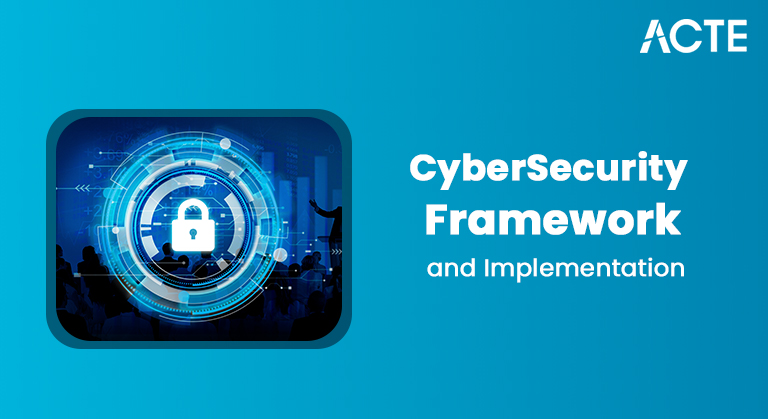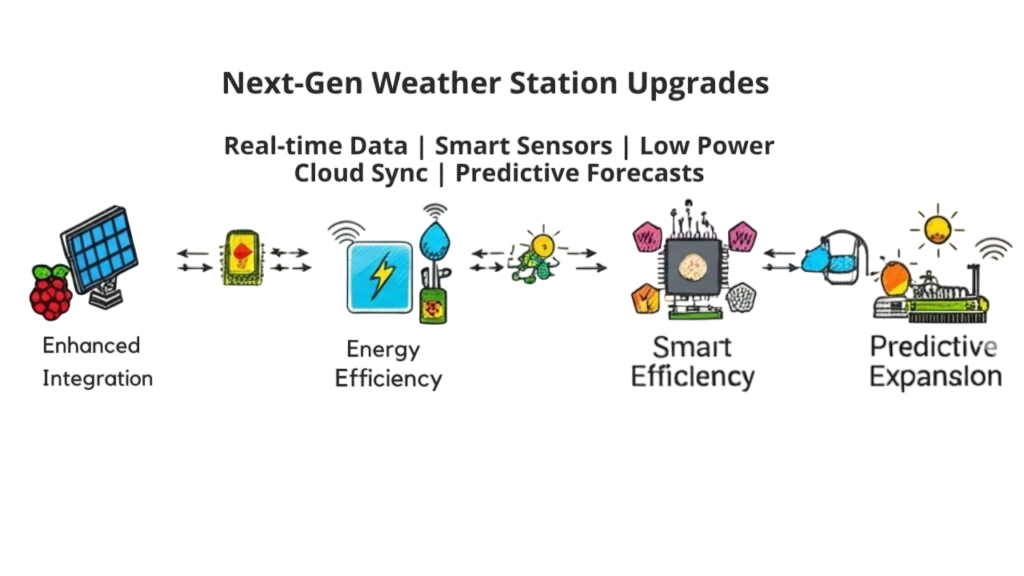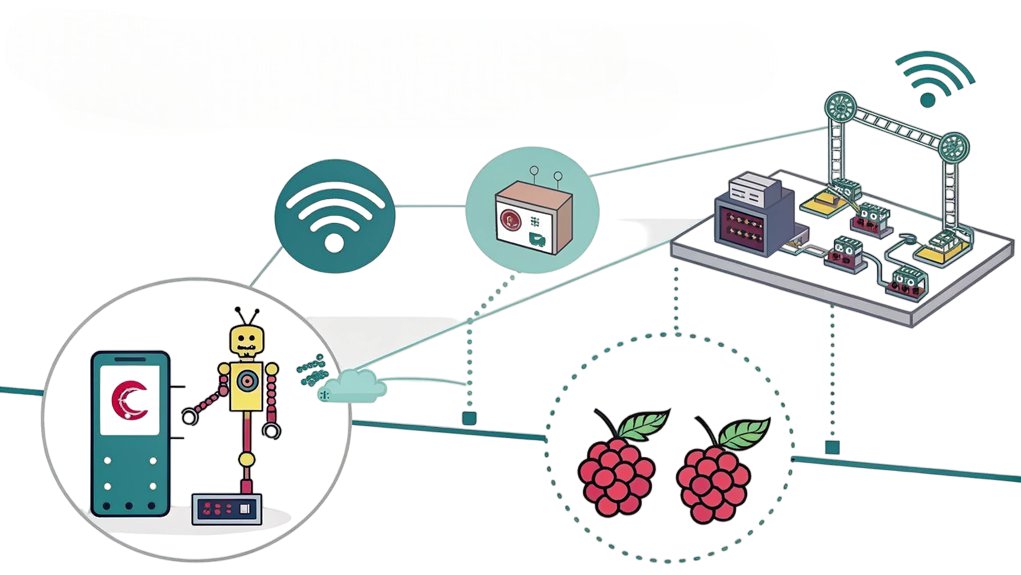
- Raspberry Pi Basics
- Home Automation System
- Media Center Setup
- Raspberry Pi Weather Station
- Smart Mirror
- Pi-powered Security Camera
- Retro Gaming Console
- Personal Web Server
- IoT Projects with Sensors
- Robotics with Raspberry Pi
- AI and ML Projects
- Conclusion
Raspberry Pi Basics
The Raspberry Pi, a credit card-sized single-board computer, has revolutionized the world of DIY electronics and computing. Affordable, versatile, and highly customizable, Raspberry Pi opens doors to a multitude of creative and educational projects. Whether you’re a beginner or an experienced tech enthusiast, the Raspberry Pi offers something for everyone, especially those interested in IOT Training and hands-on learning. From simple home automation to complex robotics and AI experiments, this compact device has become the cornerstone of many innovative solutions. In this comprehensive guide, we will explore 10 fascinating Raspberry Pi projects that not only enhance your technical skills but also bring convenience, entertainment, and intelligence into everyday life.
Home Automation System
Home automation using Raspberry Pi is one of the most popular and practical applications. With the integration of sensors, relays, and smart software, you can control lights, fans, doors, and appliances remotely via a smartphone or voice assistant. Open-source platforms like Home Assistant or OpenHAB can be installed on the Raspberry Pi to serve as a central control hub. For example, motion sensors can detect movement and automatically turn on lights.
- Temperature sensors can activate fans or heaters, enhancing energy efficiency.
- Additionally, with voice recognition modules, you can add voice control features using Google Assistant or Amazon Alexa, making your home smarter and more user-friendly.
- One of the most well-liked uses for the Raspberry Pi is the Home Automation System, which is a flexible tool that lets users create a variety of creative projects.
A home automation system combines sensors and software to provide remote or voice control of appliances, fans, lighting, and other devices using Network Commands for seamless communication and operation. Building a home automation system with a Raspberry Pi is a fulfilling project that improves everyday convenience and technical proficiency, regardless of development expertise.
Media Center Setup
Transforming your Raspberry Pi into a media center is another exciting and widely adopted project. By installing software like OSMC or Plex, you can turn your Pi into a full-fledged media hub. This setup allows you to stream movies, TV shows, music, and even live TV. All you need is a Pi board, an HDMI cable, a microSD card, and internet access. You can store media files locally or stream them from the cloud. With Kodi, an open-source media player, you can customize the interface, install add-ons, and control playback via smartphone apps. It’s a cost-effective alternative to commercial streaming devices and gives you full control over your entertainment experience.
- Integrate streaming platforms like YouTube, Netflix (with some tweaks), and Spotify using third-party Kodi add-ons.
- Set up automatic media library organization, where new content is scanned and categorized by metadata, covers, and episode information.
- Enable remote access to your media library, so you can stream your content from anywhere using Dynamic DNS or a VPN setup.
- Rain and wind sensors: Include modules to measure rainfall and wind speed/direction to create a more complete weather monitoring system.
- Solar-powered operation: Use a small solar panel and battery setup to run the station in remote outdoor locations without relying on wall power.
- Mobile alerts and dashboards: Set up email or SMS alerts when conditions (like temperature or humidity) exceed certain thresholds, and build dashboards using tools like Grafana.
- Software such as MotionEyeOS can be installed on the Raspberry Pi to enable motion detection, video recording, and real-time streaming.
- You can access the live feed from your phone or computer, receive alerts when motion is detected, and store footage locally or in the cloud.
- Keep your system updated regularly to patch vulnerabilities.
- Use fail2ban to monitor login attempts and block malicious IPs.
- Create a separate, limited-privilege user for managing your server to reduce risk.
- A common beginner project is building a Pi-based image classifier that recognizes objects or animals using a camera module.
- You can also create smart assistants that respond to voice commands, or analyze data from sensors to make intelligent decisions.
- Though the processing power is limited, combining Raspberry Pi with tools like Google Coral or USB accelerators can significantly enhance performance, making advanced AI applications accessible and affordable.
Master Internet of Things skills by enrolling in this IOT Online Training today.
Raspberry Pi Weather Station
Building a weather station using Raspberry Pi helps in understanding meteorological science and data collection. By connecting temperature, humidity, and pressure sensors like the DHT22 or BMP280 to the Pi, you can gather real-time weather data. The data can be logged, visualized, and shared online using cloud platforms like Thingspeak or a personal web server. Students and hobbyists can use this project for learning about environmental monitoring, data logging, and even machine learning applications for weather prediction making it a great example of one of the Top Most IoT Applications in real-world scenarios. It’s a great project for schools and educational institutions to encourage hands-on learning.

Smart Mirror
A smart mirror is an interactive, futuristic device that displays useful information such as time, date, weather, news, and calendar events on a reflective surface. With a Raspberry Pi, a monitor, a two-way mirror, and some coding skills, you can create your own smart mirror. The Raspberry Pi runs a custom interface using open-source platforms like MagicMirror², which can be enhanced with modules and plugins. The smart mirror can be voice-activated or touch-sensitive, and additional features like face recognition, motion detection, and integration with smart home devices can be added. It’s both a practical and visually impressive project that adds a tech-savvy flair to your living space.
Pi-powered Security Camera
Security is a growing concern, and Raspberry Pi can be used to create a cost-effective and customizable security camera system. Using a Pi Camera module or a USB webcam, you can capture high-definition video footage an ideal starting point for understanding What is IoT Architecture and how connected devices communicate within a smart security system.
Additional features like infrared vision for night surveillance and facial recognition can further enhance the system’s capabilities. This DIY security solution is ideal for home and small office use. In addition to saving money, this do-it-yourself security camera system gives you the freedom to create the precise system you want, whether that be a simple motion detection system or a sophisticated AI-powered monitoring system. Once again, the Raspberry Pi demonstrates its intelligence and scalability in meeting contemporary technological demands.
Enhance your knowledge in Internet of Things. Join this IOT Online Training now.
Retro Gaming Console
Gaming enthusiasts can revive their favorite childhood games by transforming a Raspberry Pi into a retro gaming console. Software distributions like RetroPie or Recalbox allow you to emulate classic gaming consoles such as NES, SNES, Sega Genesis, and PlayStation. With compatible USB controllers and ROM files, you can recreate the experience of playing vintage video games. The Raspberry Pi’s portability means you can take your games anywhere, and it’s also widely used in IOT Training for building smart, connected devices on the go. You can also design a custom arcade cabinet or handheld gaming console using 3D printing and additional peripherals. This project is a nostalgic and fun way to blend old-school gaming with modern technology.
Personal Web Servere
Hosting a personal web server on Raspberry Pi is a great way to learn web development, server management, and networking. By installing Apache, Nginx, or Lighttpd, you can serve websites directly from your Pi. You can also install MySQL and PHP to create a full LAMP stack.
This setup is perfect for testing web applications, hosting a blog, or creating a personal cloud storage solution. With tools like WordPress, you can build a website without deep technical knowledge. Security features such as SSL certificates and firewall configurations can also be implemented, making it a valuable learning experience in cybersecurity and system administration.
Want to lead in Cloud Computing? Enroll in ACTE’s Cloud Computing Master Program Training Course and start your journey today!
IoT Projects with Sensors
Internet of Things (IoT) projects are where the Raspberry Pi truly shines. By connecting various sensors (temperature, motion, gas, sound, light) and actuators (motors, relays), you can build smart systems for home automation, agriculture, healthcare, and industry. For instance, you can monitor soil moisture and automate irrigation in a smart garden setup. Or use gas sensors to detect harmful gases in industrial environments. The Raspberry Pi can communicate with cloud platforms via Wi-Fi, enabling remote monitoring and control making it a key component in developing Innovative IoT Projects across various domains. Programming languages like Python and MQTT protocol are commonly used to interface and transmit data. These projects teach valuable skills in electronics, networking, and cloud integration.
Robotics with Raspberry Pi
The Raspberry Pi is powerful enough to control complex robotic systems. From simple line-following robots to advanced humanoid or quadruped bots, the Pi serves as the brain of the robot. It can interface with motor drivers, sensors, and cameras to enable real-time decision-making. Popular kits and frameworks such as PiCar, GoPiGo, and ROS (Robot Operating System) simplify the development process. You can program the robot to perform tasks like obstacle avoidance, voice control, facial recognition, and more. This makes it a valuable tool for students and hobbyists to explore the fields of mechanical design, embedded systems, and artificial intelligence in robotics.

With countless customisation options, robotics with Raspberry Pi is not only entertaining but also a springboard for careers in AI research, autonomous vehicles, and robotics engineering. It enables students to use accessible and reasonably priced hardware to design, construct, and invent.
AI and ML Projects
Artificial Intelligence (AI) and Machine Learning (ML) are no longer limited to powerful servers. With frameworks like TensorFlow Lite and OpenCV, Raspberry Pi can be used to build AI-powered applications such as image recognition, voice assistants, and predictive analytics.
The Raspberry Pi has developed into a potent platform for AI and ML experiments, enabling programmers to create clever apps at a reasonable cost highlighting its relevance in the Future Scope of IoT and smart technology development. AI and ML projects include voice assistants, image recognition, and predictive analytics with OpenCV and TensorFlow Lite, which are lightweight frameworks. Students, enthusiasts, and innovators wishing to investigate the future of smart technology can now access AI and ML with the help of extra tools and accelerators provided by Raspberry Pi.
Conclusion
The Raspberry Pi is more than just a small computer; it’s a platform for innovation and learning. From building smart homes to experimenting with AI and robotics, the possibilities are virtually endless. These projects not only enhance your technical proficiency but also encourage problem-solving, creativity, and hands-on learning. Whether you’re a student exploring STEM concepts, a developer testing prototypes, or a hobbyist building your dream gadget, Raspberry Pi offers a cost-effective and flexible solution making it an excellent platform for IOT Training and real-world application development. As technology continues to evolve, the Raspberry Pi remains a vital tool in democratizing access to computing and enabling a new generation of inventors and engineers.In essence, Raspberry Pi isn’t just about building gadgets it’s about building future-ready minds. It continues to be a vital educational tool, a prototyping powerhouse, and an entry point into real-world tech careers, helping shape the inventors, engineers, and thinkers of tomorrow.





